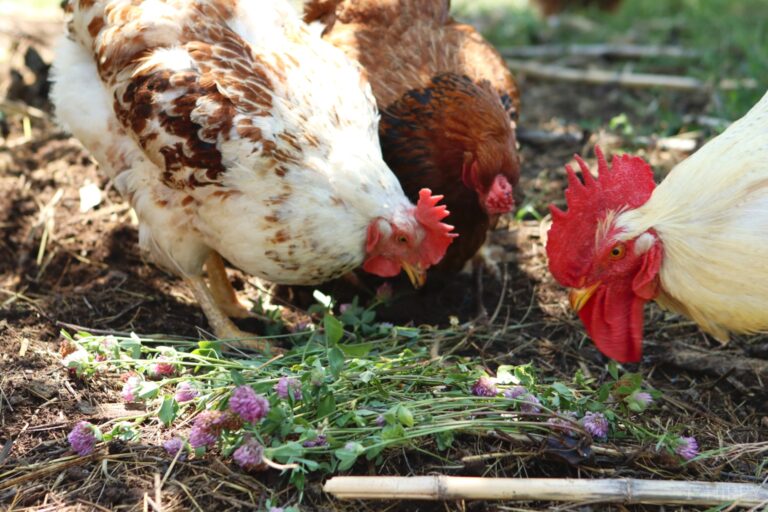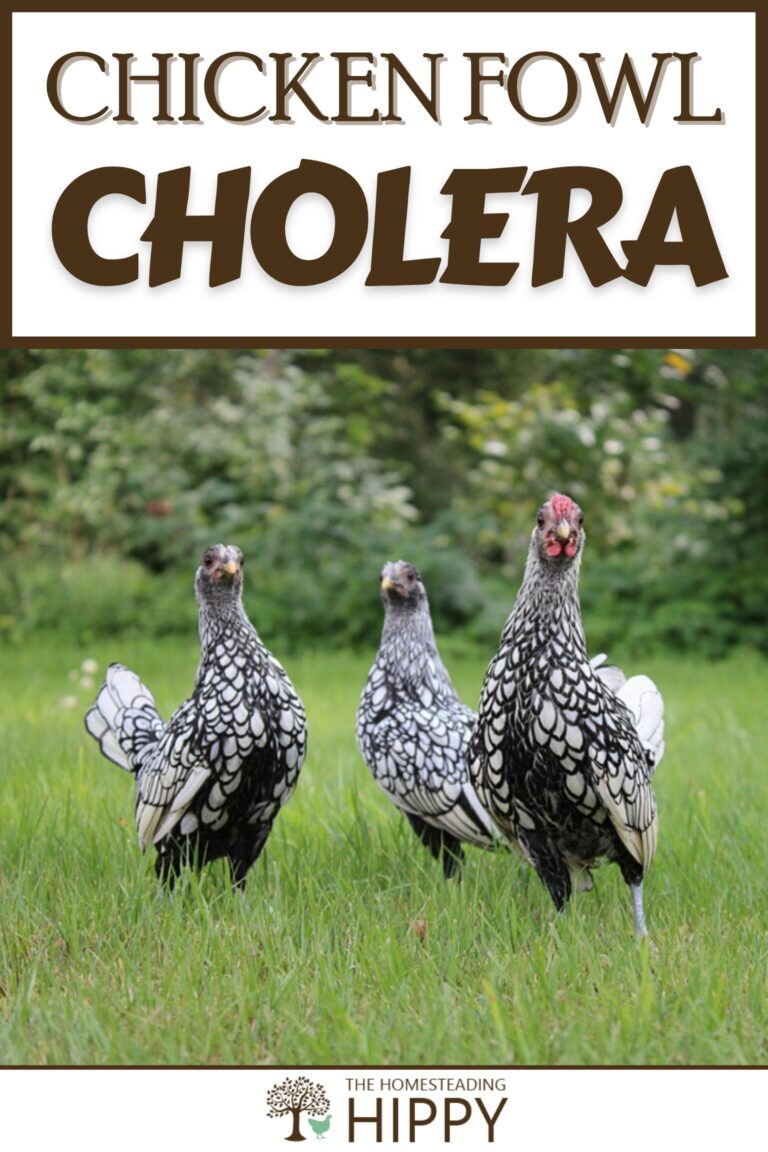Chickens are generally hardy, healthy birds but even they can fall victim to various diseases. Perhaps none are more horrendous than chicken fowl cholera.

Also known as avian cholera, this highly contagious and often fatal disease affects chickens of all ages, although old birds are most susceptible.
Chicken fowl cholera can strike quickly and without much warning, spread by tiny bacteria and close contact.
You might come out to your coop one morning to find most of your flock dead or dying. This is among the most serious of infections that you and your flock could face.
The only chance your birds will have is if you act fast and correctly. To do that, you’ll need the right information. A single mistake or misdiagnosis could spell certain death.
This article will serve as a primer that will orient you to the threat posed by this awful disease.
What is Chicken Fowl Cholera?
Chicken fowl cholera is caused by a bacterium called Pasteurella multocida. This bacterium is found in the environment, usually in water or wet soil, and can infect many different types of animals, including chickens.
The bacteria enter the chicken through the respiratory system or an open wound and begin to multiply. As they do so, cause lots of problems throughout the body, including most gravely acute and sudden septicemia.
The disease can show a variety of other general symptoms that can make diagnosis difficult and can express in either acute or chronic forms.
How Does it Spread?
Chicken fowl cholera is highly contagious, meaning that it can spread quickly and easily through a flock.
The bacteria are most often transmitted through contact with contaminated water or soil, but can also be passed by close contact with an infected bird, live or dead.
It is possible for the germs to hop from one chicken to another via contaminated droplets in the air.
The bacteria can also easily be transmitted on the feet of wild birds or other animals that come into contact with matter containing the bacteria.
Rats, dogs, and cats are all known vectors for chicken fowl cholera, with rats being major movers of the disease after entering a coop containing living or dead chickens with the disease.
Contact with dead flesh, soil, or contaminated bedding is sufficient for contamination to begin.
You must assume that your entire flock has been exposed if even one bird is confirmed to have it.
There are two types of Chicken Fowl Cholera
It is important to understand that there are two expressions of chicken fowl cholera: acute and chronic.
Acute is the most harrowing and is characterized by a very sudden onset of symptoms that leads to death within hours.
There may be no obvious signs until most of the flock is dead. You will have healthy birds one minute, and dead or dying ones the next.
Chronic cases are not as immediately deadly, but can take a long time to run their course and often end in serious debilitation or the death of the chicken.
What are the Symptoms?
The symptoms of acute chicken fowl cholera are sudden and severe, making it hard to detect in its early stages. It can kill an entire flock in just a few hours.
The most common and obvious symptom is sudden death, with no prior sign of illness. This often takes place overnight.
If your flock is hit hard by chicken fowl cholera, you might wake up to find many of your birds dead or dying.
The first symptom you’re likely to see, if you see any or have survivors, is excessive green or yellowish diarrhea, bluish or purplish combs and wattles, sudden weight loss, ruffled feathers, lethargy, loss of appetite, and gasping for breath accompanied by mucus on the beak.
The symptoms of the chronic version are less immediately devastating but no less traumatic for the poor chickens that are affected.
Infected birds will usually have a ruffled appearance, and show signs of weight loss and diarrhea.
Inflammation on multiple parts of the body is a major indicator, but particularly gross swelling of the wattles, face, ears, eyes, nasal passages, and feet.
Breathing problems are likely, as is a slack, drooping head or neck. These symptoms can last for months, even years.
If you notice any of these symptoms, but particularly clusters of them, contact a vet ASAP.
What are the Treatment Options?
Unfortunately, there is no cure for chicken fowl cholera, and once it has infected your flock you will likely lose some or all of your chickens to the disease.
Infected birds are typically euthanized, as antibiotics, though reasonably effective at reducing mortality, do not eradicate the germ within the chickens, meaning it persists.
The best thing you can do is take measures to prevent it from happening in the first place. More on that in just a moment.
In any case, affected birds must be quarantined or culled, and all inhabited areas thoroughly disinfected before repopulation.
How Long Does Recovery Take?
Recovery from either variant is lengthy, and not guaranteed. If your flock contracts chicken fowl cholera, you’re in for a long haul.
For chickens that survive the acute variant, the best thing you can do is to maintain supportive care and hope for the best, though much of the time you can make a great case for mercy killing them.
The chronic variant is just as bad, and affected birds might exhibit primary symptoms for years, and they’ll be contagious the entire time. Again, euthanasia is prescribed.
How to Prevent Chicken Fowl Cholera
The best way to deal with chicken fowl cholera is to prevent it from happening in the first place. There are several measures you can take to reduce the risk of your flock being infected.
The first is to keep your coop clean and dry. Bacteria love damp, dirty environments, so it’s important to minimize potential breeding grounds.
This means cleaning out the coop on a regular basis and making sure that bedding is dry and fresh.
It’s also important to make sure that the coop is well-ventilated to discourage the growth of bacteria.
You should also practice good biosecurity measures, such as not sharing equipment or clothing with other chicken keepers, and disinfecting anything that comes into contact with your birds.
It’s also important to vaccinate your chickens specifically to help protect against this avian cholera.
There are two types of vaccines available, one for the acute form and one for the chronic form. The vaccine for the acute form is more effective, but both will help reduce the risk of infection.
Vaccinated or not, if you do have an outbreak, you should immediately separate any sick or suspected birds from the rest of the flock. This will help to prevent further spread of the disease.
Ideally, you should also dispose of any dead birds immediately and disinfect anything they have come into contact with.
Can Humans Catch the Disease?
Yes, though it typically is not as severe for humans as it is for chickens. In a worst-case scenario, it might cause meningitis, so it is still no joke.
Humans can catch the disease the same way chickens can, and one of the most common vectors, aside from chickens themselves, is dogs and cats that might come into contact with infected birds, soil, water, or food.
The bacteria will readily live under the nails of both dogs and cats, so keep Fido and Fluffy clear of the chickens and their spaces.
Always Practice Good Hygiene When Dealing with an Outbreak
If your flock should suffer an outbreak it is imperative that you practice excellent hygiene after dealing with anything related to control or treatment.
This means suiting up with bio-resistant overgarments, booties, and gloves, wearing goggles and a respirator, disinfecting anything that might have come into contact with sick birds, removing and washing clothes separately, and washing your hands and arms thoroughly up to the elbows.
Outbreaks of chicken fowl cholera can be devastating for chicken keepers, but if you take the proper precautions and stay on top of vaccinations you can help reduce the risk of your flock being affected.
If you want to learn more about this disease, check out this vet manual here.

Tom has built and remodeled homes, generated his own electricity, grown his own food and more, all in quest of remaining as independent of society as possible. Now he shares his experiences and hard-earned lessons with readers around the country.
Find out more about the team here.
